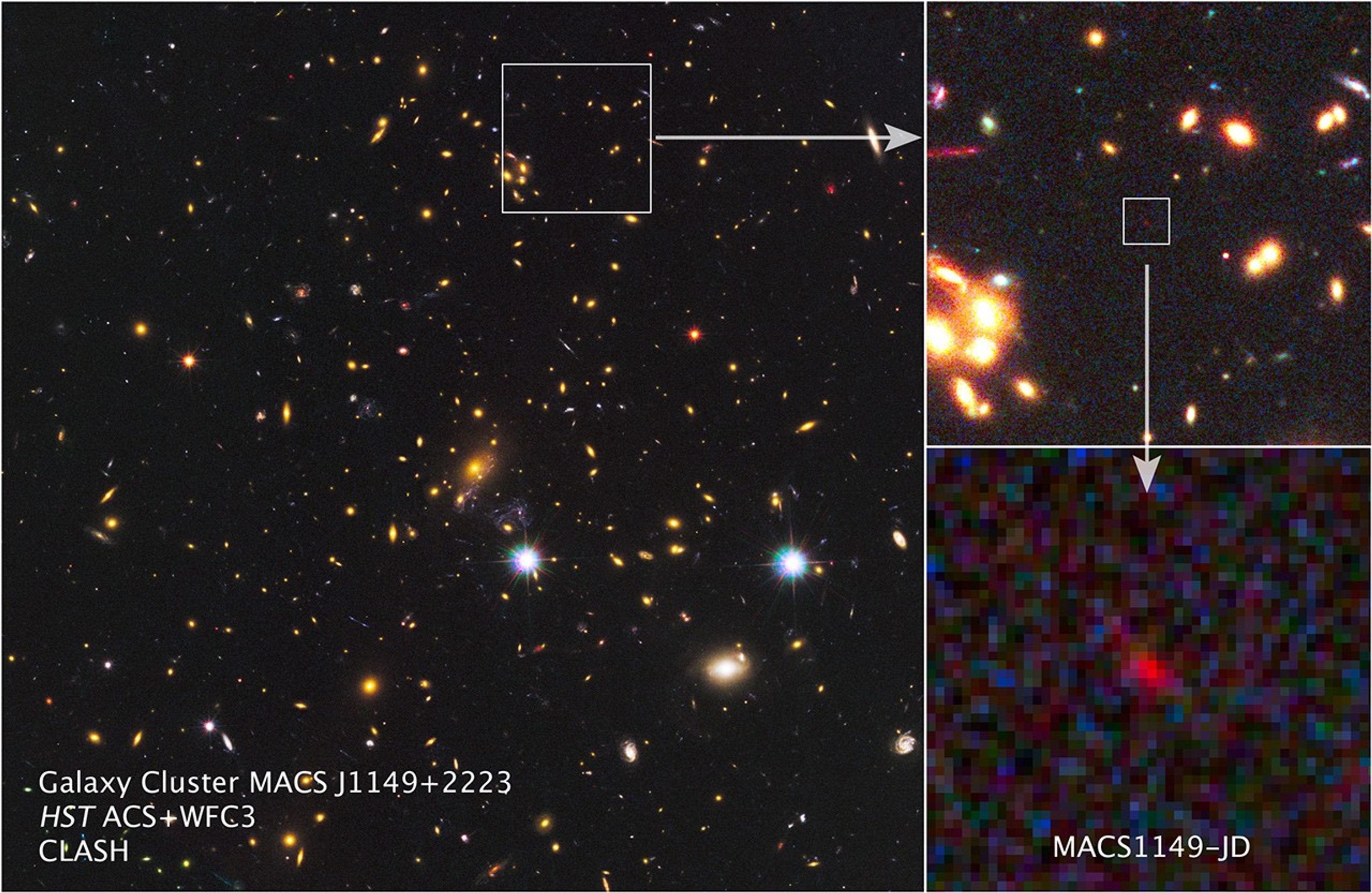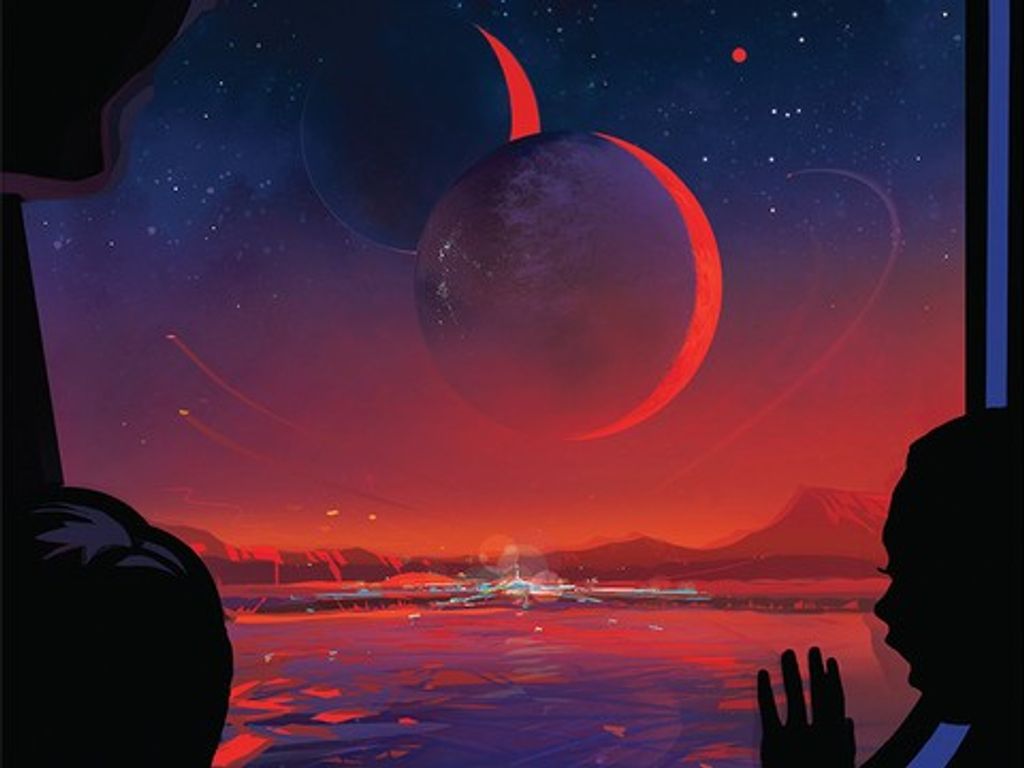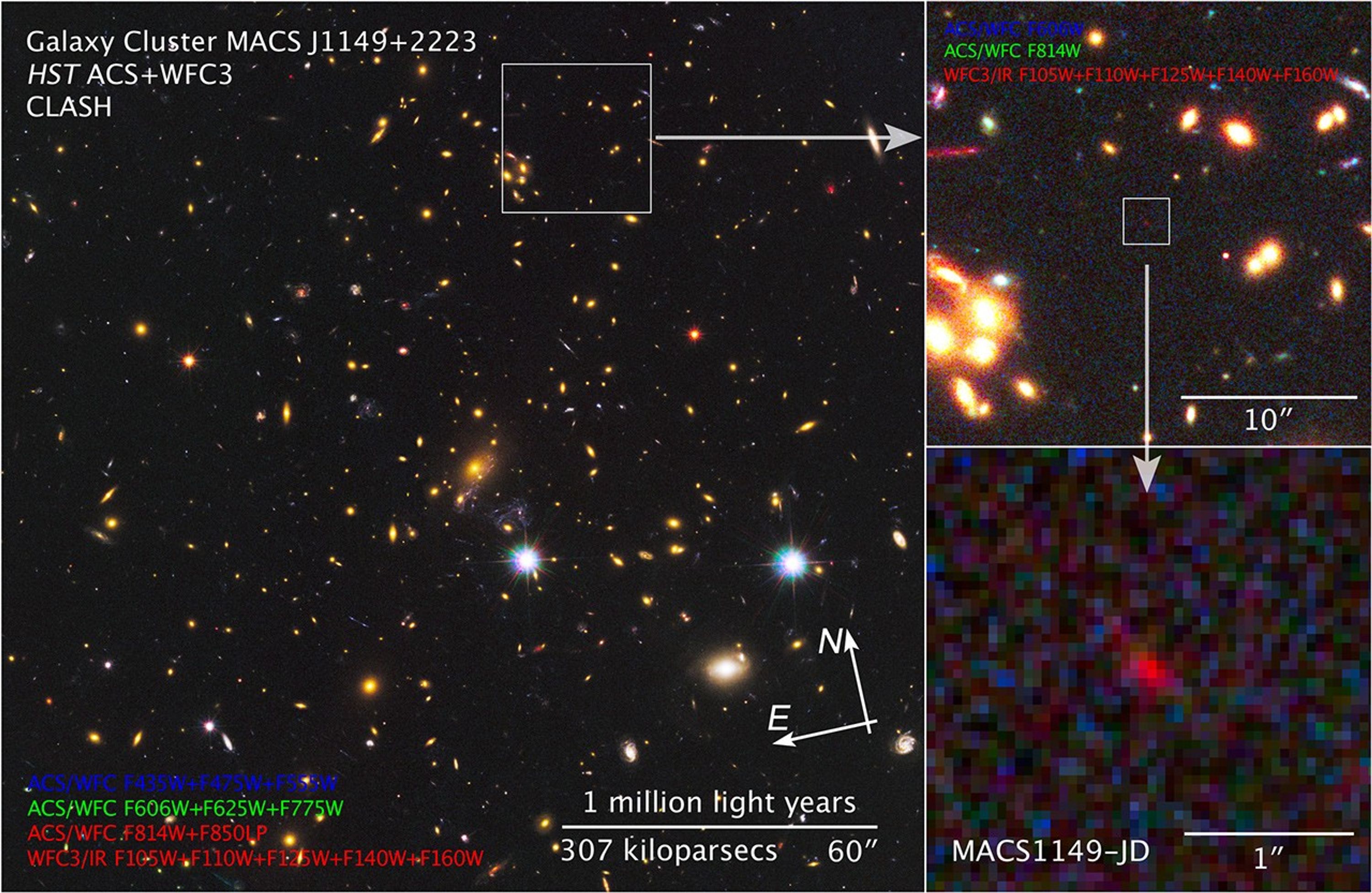1 min read
Galaxy Cluster MACS J1149+2223

About the Object
- R.A. PositionR.A. PositionRight ascension – analogous to longitude – is one component of an object's position.11h 49m 35.5s
- Dec. PositionDec. PositionDeclination – analogous to latitude – is one component of an object's position.22° 24' 4.21"
- ConstellationConstellationOne of 88 recognized regions of the celestial sphere in which the object appears.Leo
- DistanceDistanceThe physical distance from Earth to the astronomical object. Distances within our solar system are usually measured in Astronomical Units (AU). Distances between stars are usually measured in light-years. Interstellar distances can also be measured in parsecs.5.3 billion light-years (1.6 billion parsecs or redshift z = 0.544)
About the Data
- Data DescriptionData DescriptionProposal: A description of the observations, their scientific justification, and the links to the data available in the science archive.
Science Team: The astronomers who planned the observations and analyzed the data. "PI" refers to the Principal Investigator.The image was created from Hubble data from proposals 9722: PI: H. Ebeling (University of Hawaii); and 12068: PI: M. Postman (STScI). - InstrumentInstrumentThe science instrument used to produce the data.HST>ACS/WFC and HST>WFC3/IR
- Exposure DatesExposure DatesThe date(s) that the telescope made its observations and the total exposure time.2004, 2010, and 2011, Exposure Time: 11.3 hours
- FiltersFiltersThe camera filters that were used in the science observations.ACS/WFC F435W (B), F475W (g), F555W (V), F606W (V), F625W (r), F775W (I), F814W (I), and F850LP (z)WFC3/IR F105W (Y), F110W (YJ), F125W (J), F140W (JH), and F160W(H)
- Object NameObject NameA name or catalog number that astronomers use to identify an astronomical object.MACS J1149+2223
- Object DescriptionObject DescriptionThe type of astronomical object.Galaxy Cluster/Gravitational Lens
- Release DateSeptember 19, 2012
- Science ReleaseNASA Telescopes Spy Ultra-Distant Galaxy Amidst Cosmic ‘Dark Ages’
- Credit

This image is a composite of separate exposures acquired by the ACS and WFC3 instruments. Several filters were used to sample various wavelengths. The color results from assigning different hues (colors) to each monochromatic (grayscale) image associated: Blue: ACS/WFC F435W (B) + F475W (g) + F555W (V) Green: ACS/WFC F606W (V) + F625W (r) + F775W (I) + Red: ACS/WFC F814W (I) + F850LP (z) + WFC3/IR F105W (Y) + F110W (YJ) + F125W (J) + F140W (JH) + F160W(H)
Related Images & Videos

A Glimmer from a Dark Cosmic Era
With the combined power of NASA's Spitzer and Hubble space telescopes, as well as a cosmic magnification effect, astronomers have spotted what could be the most distant galaxy ever seen. Light from the primordial galaxy traveled approximately 13.2 billion light-years before...
Share
Details
Claire Andreoli
NASA’s Goddard Space Flight Center
Greenbelt, Maryland
claire.andreoli@nasa.gov




































